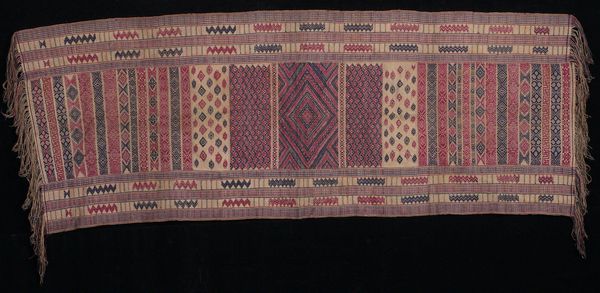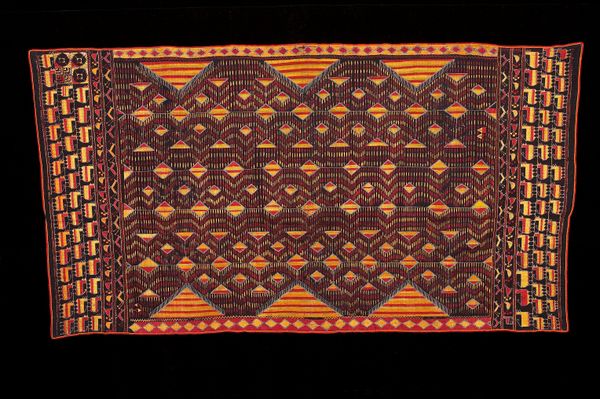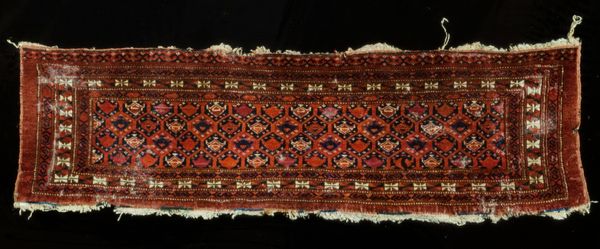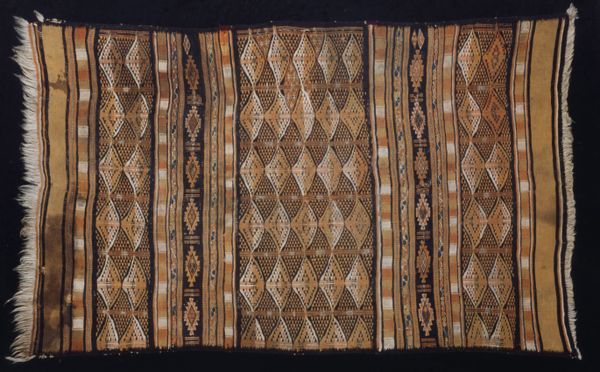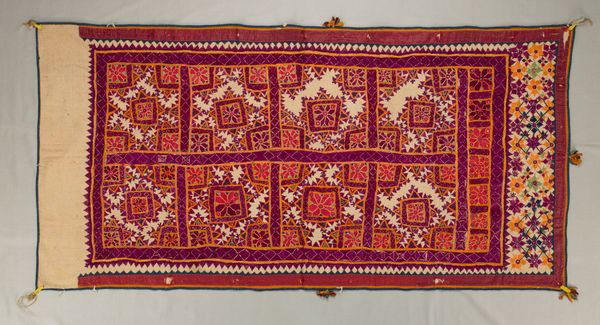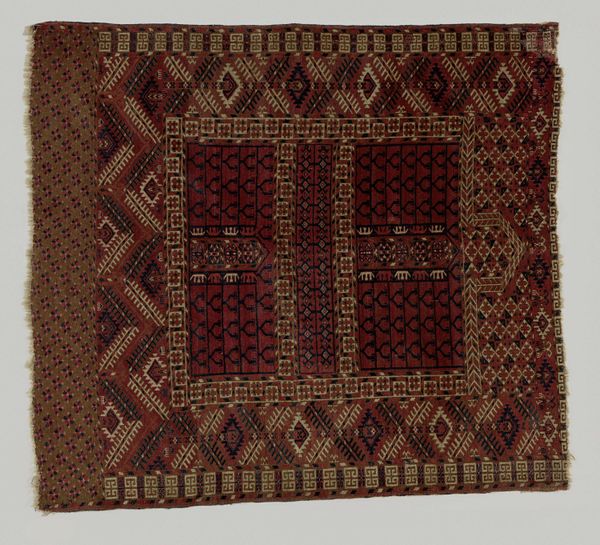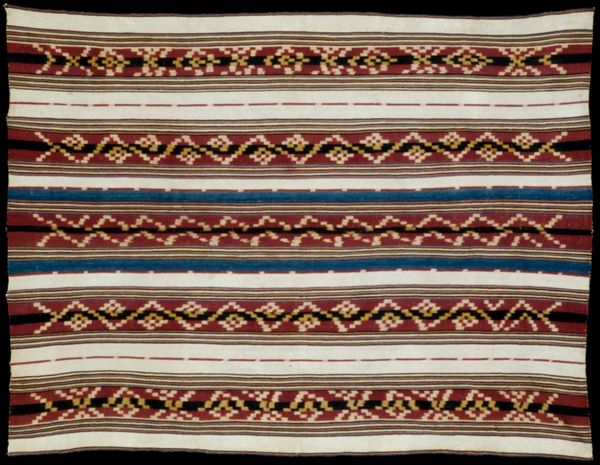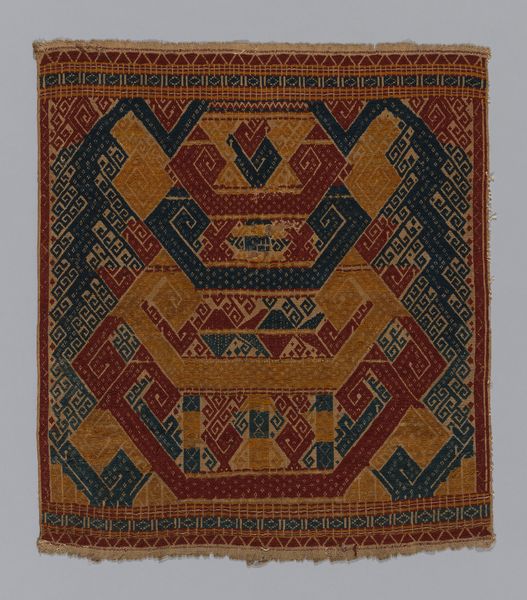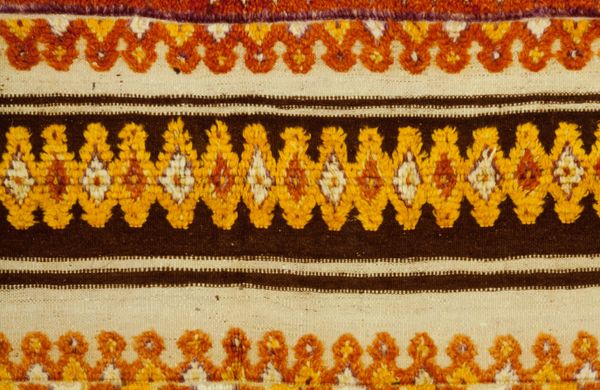
silk, textile, wool, cotton
#
natural stone pattern
#
silk
#
pattern
#
textile
#
wool
#
geometric pattern
#
abstract pattern
#
repetition of pattern
#
intricate pattern
#
pattern repetition
#
cotton
#
beaded
#
layered pattern
#
funky pattern
Dimensions: 38 3/4 x 60 1/2 in. (98.4 x 153.7 cm)
Copyright: Public Domain
Editor: Here we have a textile piece called "Saddle Cover (rataya)," likely from the 20th century. It’s comprised of silk, wool, and cotton and now resides at the Minneapolis Institute of Art. Looking at it, I’m immediately struck by the geometric patterns. There is repetition, but with slight variations…it’s intriguing. What do you make of this work? Curator: This rataya presents an interesting glimpse into the culture of its origin, doesn't it? Consider that these weren't simply decorative items; they were crucial parts of equestrian life, and often signified the status of the rider. The choice of materials – silk, wool, and cotton – itself speaks to resource availability and trade networks. What do you think these repeated patterns might be communicating to the user of this artwork, the society where it was commonly used, and a present day museum audience? Editor: Hmm… to the user, it may suggest order, a familiar comfort in daily life. For society, maybe it reflects shared aesthetic values, or even some kind of symbolic language embedded in the designs. For us, viewing it in a museum, perhaps it’s a little harder to grasp without specific cultural context…we just see patterns, right? Curator: But the “just patterns” aspect IS crucial. Think about the institutions that collect and display objects like this. A saddle cover, initially utilitarian, becomes “art” within the museum. Doesn’t the museum setting transform how we perceive its social and cultural function? Are we now appreciating skill, aesthetics, and maybe ingenuity that might not have even been at the front of mind to the artwork’s first users? Editor: That’s a fantastic point. Seeing it here, stripped of its original context, really shifts the focus to the artistic merit itself, or what we perceive that to be. Thanks for bringing this object to life. Curator: Absolutely! I am so glad we looked at it together.
Comments
No comments
Be the first to comment and join the conversation on the ultimate creative platform.
